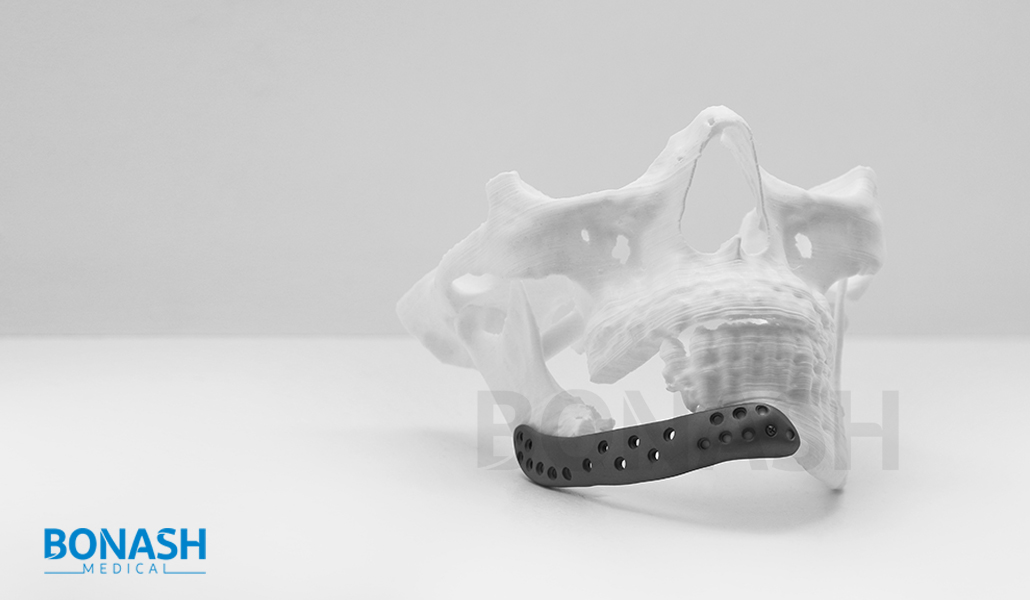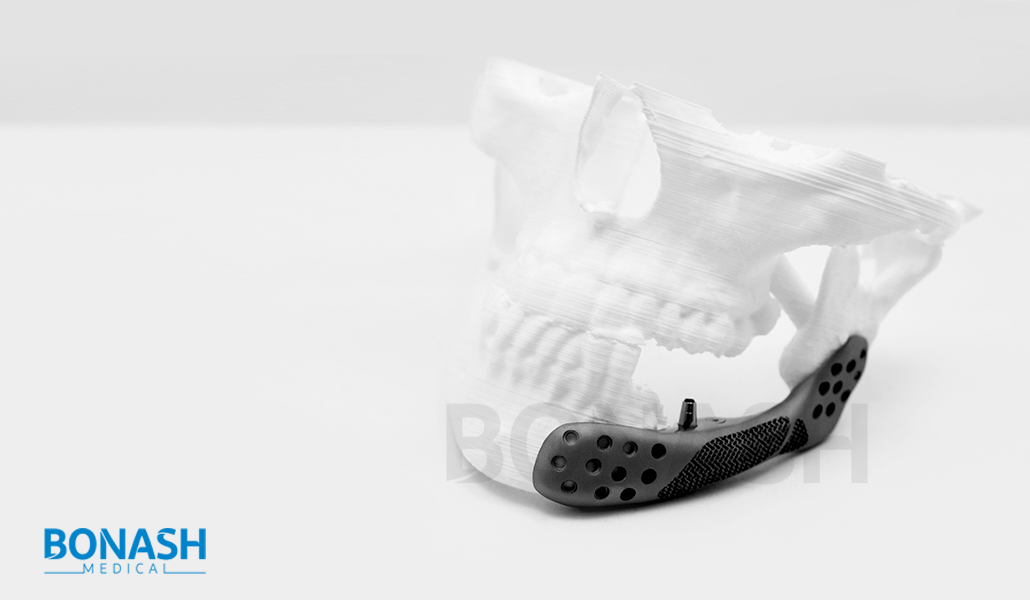MANDIBULAR IMPLANTS
Mandible Patient Specific Implants
Mandible Patient Specific Implants
In addition to its effects on the patient’s appearance and beauty, reconstruction of an injured mandible, which can be due to an accident, tumor resection, or congenital defects can significantly affect the mandible’s performance in mastication, speaking, and effective breathing.
Due to the heavy loads applied to the mandible throughout one’s lifetime, reconstruction using conventional methods including mass-production reconstruction plates or autograft are often associated with high risks of fracture, exposure, and requiring repeat surgery. In addition, restoring a natural, symmetrical appearance for the patient’s face is very difficult and often impossible using conventional methods because they require manual shaping and forming of the plate or bone graft during the surgery.
With the help of Bonash Medical Patient-specific mandibular reconstructive implants that are designed and manufactured digitally and by simulating the healthy side of the face, the surgeon won’t have to shape the implant mid-operation, and thus the procedure would be faster and easier, yielding reliable results.
To view the pictures of a mandibular surgery example, please click
[Containing Graphic Surgical Content]

Using bone graft isn’t possible for some patients, including the ones with a history of using bone graft. In addition, there is the risk of some complications as a result of injury at the bone graft harvest site.
Since they require reshaping during implantation and applying high stress for fixation on the bone, conventional and mass-production reconstruction plates are usually associated with high risk of exposure or fracture. This can lead to higher costs and difficulties of repeat surgeries for the patient.
With the development of additive manufacturing technology and the possibility of using patient-specific implants, using these types of implants in mandibular reconstructive surgeries have now become possible, and this has resulted in significant increase of success rate and consistency in the outcome of these surgeries.
In this method, the design process is performed under the direct supervision of the surgeon and based exactly on the patient’s anatomy. Therefore, the best result of mandible reconstruction is obtained for the patient both performance-wise and appearance-wise.


In some patients, conventional dental implants face some limitations because of severe mandibular atrophy due to tooth loss or some underlying disease, and therefore low bone volume and depth. In such cases, there will be two options: using patient-specific subperiosteal implants or using graft for mandibular reconstruction.
One of the new and highly efficient methods for reconstruction of the atrophic ridge, especially when reconstructing a high volume and surface of the bone is necessary, is reconstruction using patient-specific guided bone regeneration mesh. In this method, a temporary implant is used as seen in the picture as protection for reconstruction or “Guided Bone Regeneration”.
This implant is used temporarily and as a scaffold for bone generation, and will be extracted from the mouth after complete restoration and increase in the density of the bone tissue, preparing the conditions for dental implant placement.
